We were excited to leave this Roman city and head out for a day of being in the countryside. We were lured to Arles in part because of its nearness to the national park which abuts the Mediterranean and is known for pink flamingos, white horses and black bulls.
The Camargue is a National Park that lies just south, between the Mediterranean Sea and the two arms of the Rhône River delta. It is home to more than 400 species of birds because Its brine ponds provide one of the few European habitats for the greater flamingo. The marshes are also a prime habitat for many species of insects, notably (and notoriously) some of the most ferocious mosquitos to be found anywhere in France. The Camargue has an eponymous horse breed, the famous white Camarguais. Camargue horses are ridden by the gardians (cowboys), who rear the region’s cattle for fighting bulls for export to Spain.
We began our day of wildlife viewing at the ornithological center, which has a 1 mile loop around some salt marshes that are the home to rose flamingos, several types of heron, ibis, egret and other small birds. And I was surprised to see a nutria in the water, which then climbed out and chewed on some local flora. Didn’t know what it was at the time — a beaver? An otter? And was less interested once I realized it was really just a large water rat. The birds, on the other hand, were spectacular, and the layout of the walk around these marshes provided multiple opportunities to see hundreds of flamingos and herons. It was delightful.
From there, we drove a bit further to Stes-Marie-de-Mer, a lovely seaside vacation-y town right on the Grand Plage that runs along the shore of the sea. There was a market underway, but we mostly wanted to head to the beach and sat on the sand and ate our baguettes, feeling very French. Once the calendar changed, the seaside towns begin to quiet down, so there wasn’t that frantic summer vibe that we found in Cassis. Given the location, this once Roman village was often invaded and pillaged and it is also a pilgrimage destination for Roma (Gypsies), who gather yearly for a religious festival in honor of Saint Sarah, who may have been the Egyptian servant of the three Mary’s. We just enjoyed the beach.
Following the main tourist route we shortly came across the white horses we were in search of — not bounding out of the surf as the postcards had suggested, but certainly in numbers and roaming the countryside. Continuing our drive our destination was a spot along the Etang de Vaccares, a part of the huge brine lagoon that serves as a refuge for scores of bird species. There’s a spot run by Paul Ricard that we were told to visit, and were a bit disappointed by. Having been handcuffed by prohibition, Ricard put aside his Pastis business to grow rice instead, and has since built a ranch on the site. He offers horseback riding, bull fighting shows and a nature walk around the property. We took the walk, but didn’t see much except some bulls sitting in a field. Oh well, not all concierge recommendations are worthwhile.
Back to Arles, a stroll around town and some unexpected discoveries, like the ruins of the old Roman baths of Constantine. And several unexpected.art installations around the old town. Then it was out to a lovely seafood dinner in the Place de Forum. And Monday (Labor Day) came to an end.
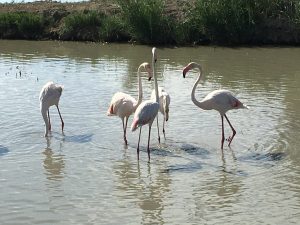
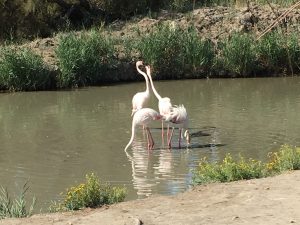
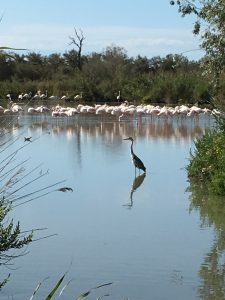
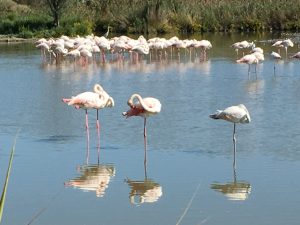
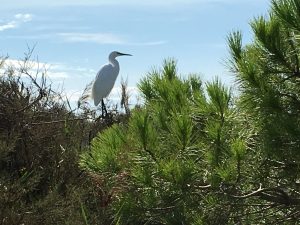
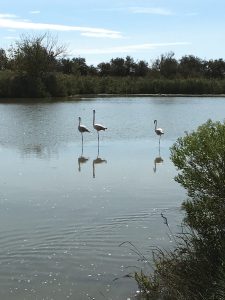
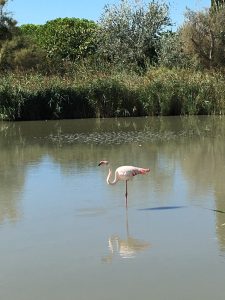
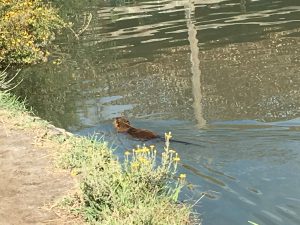
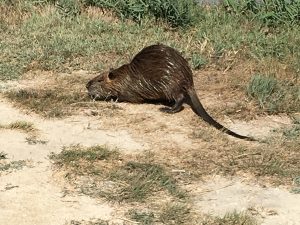
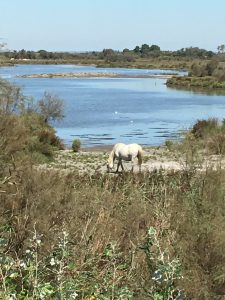
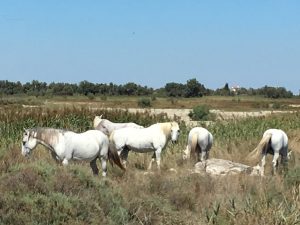
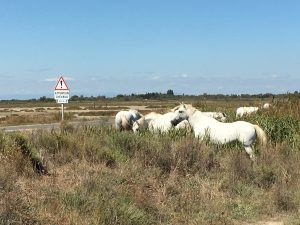
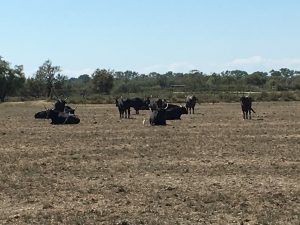
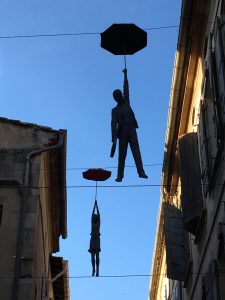
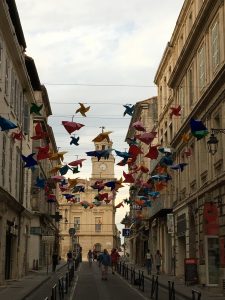
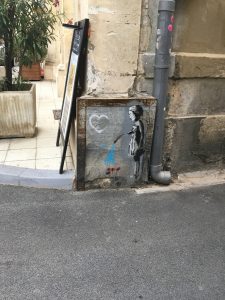
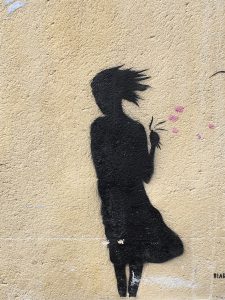
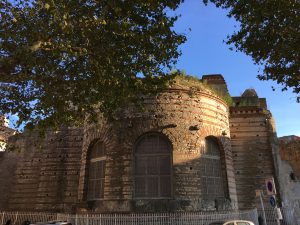
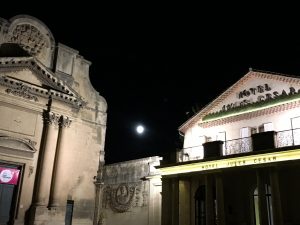
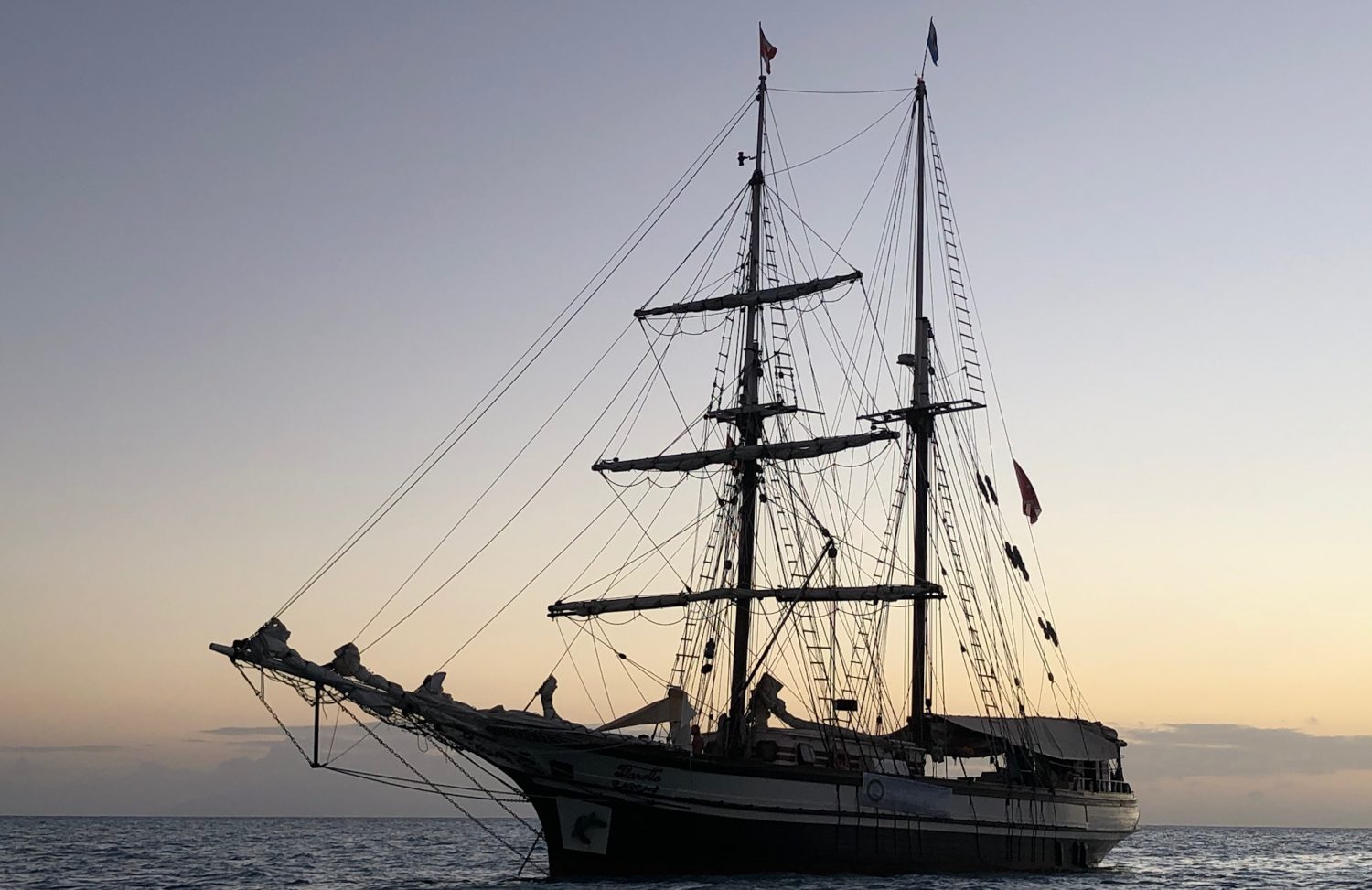
Love those flamingos!
Would have loved this day!!! Did you know nutria are a big source of protein in some parts of the world?